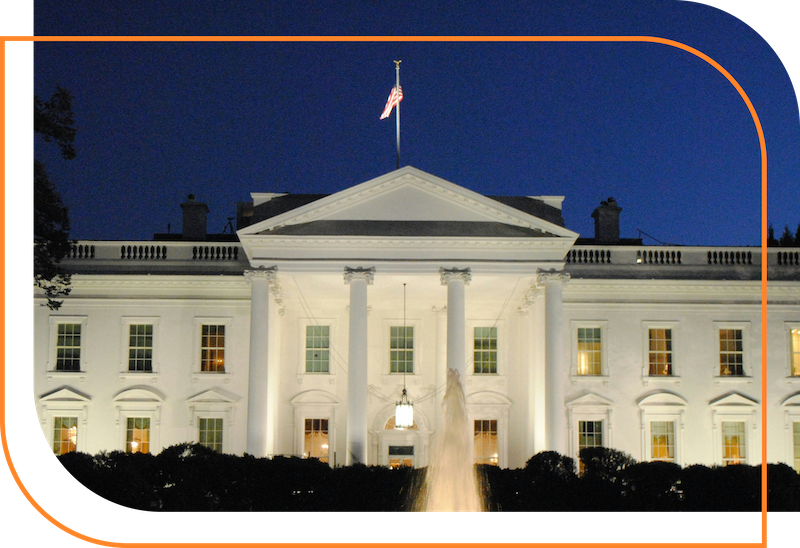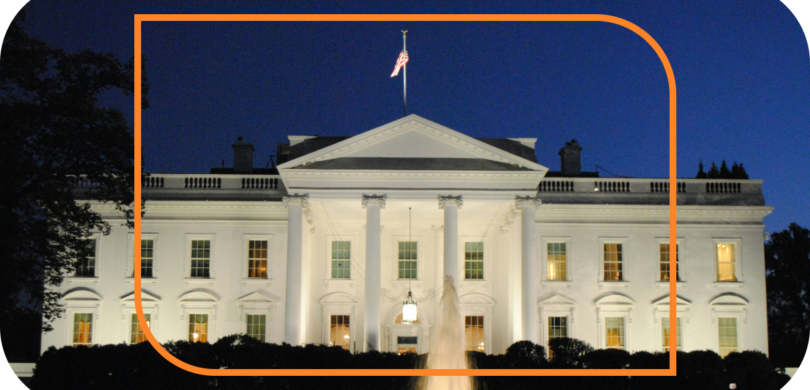President Trump’s recent flurry of executive orders is making us consider: how do executive orders impact public policy?
What is an Executive Order?
Executive orders are a mechanism presidents use to steer the federal government. Unlike laws passed by Congress — which require debate, compromise, and approval from both chambers — executive orders are mandatory directives that have the effect of law. They allow presidents to act swiftly to clarify or implement existing laws; an option when time or congressional gridlock limits progress.
So, why do presidents lean on executive orders? Simply put, they’re a tool for efficiency.
Whether responding to a national emergency or advancing policy goals that can’t wait for legislation, these orders allow the executive branch to stay agile. Of course, their power has limits: they can’t create laws, and courts can strike them down if they overreach. We’ve seen this happen before across presidential administrations.
To understand where executive orders fit in the broader governance landscape, it’s helpful to compare them to other governance tools:
- Congressional legislation lays the foundation, creating enforceable laws.
- Federal agencies then build on that foundation, crafting regulations and rules to operationalize those laws.
- Executive orders typically offer presidents a way to guide agencies in how they enforce these regulations or address pressing issues. If courts believe that an EO is overreaching and attempting to create a law, it will most likely be stricken down.
Trump 2025
President Trump’s recent series of executive orders demonstrates their strategic value. In less than a week, he’s targeted issues ranging from government transparency to energy independence. While these moves are definitely energizing supporters, they’re also sparking debate over the balance of power and the potential for overreach.
Some Recent Executive Orders from President Trump:
- Declassification of Records Concerning the Assassinations of President John F. Kennedy: This executive order mandates the release of all remaining classified documents related to JFK’s assassination. It’s a move aimed at fostering transparency and addressing public curiosity, though exceptions remain for records that might jeopardize national security.
- Ending Illegal Discrimination and Restoring Merit-Based Opportunity: This order directs federal agencies to prioritize fairness and merit in hiring and contracting. By scrutinizing existing diversity, equity and inclusion policies, it seeks to ensure compliance with anti-discrimination laws, emphasizing qualifications over identity-based preferences.
- Ending Radical and Wasteful Government DEI Programs and Preferencing: This directive calls for an overhaul of federal diversity, equity, and inclusion programs. It challenges the efficacy and cost of these initiatives, emphasizing measurable outcomes and refocusing resources on merit-based practices.
- Securing Our Borders: Bolstering border security is the centerpiece of this order. It allocates resources to physical barriers, enhances surveillance, and streamlines asylum processes, aiming to address illegal immigration and human trafficking.
- Unleashing American Energy: This executive order removes obstacles to domestic energy production, fast-tracking permits and reducing regulatory red tape. It’s a nod to energy independence and innovation, balancing economic growth with environmental considerations.
Executive orders usually go into effect as soon as the president signs them, unless the order says otherwise. Sometimes, if the EO is more complicated or requires extra steps, like creating new regulations or getting funding, it might take a little longer to fully roll out. But in most cases, the order takes effect right away or within a short period of time.

Interested in learning more about monitoring public policy?
Explore Plural’s AI-powered legislative and regulatory analysis tools.
